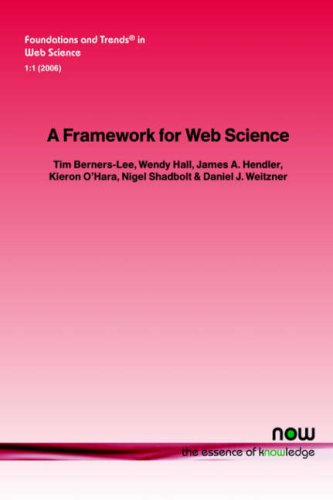Associative vs. Analogous Reasoning
There are many different types of reasoning, but not too many have been successfully automated beyond deductive linear reasoning and various statistical methods. What alternative methods has the Web facilitated? One obvious candidate is associative reasoning, where reasoning on the basis of associations - which can be extremely unpredictable and personalized - takes one down a train of thought [202]. So, for example, the classic case of associative reasoning is given in Proust's novel Remembrance of Things Past, where the middle-aged narrator, upon eating a Madeleine dipped in tea, finds himself transported to his childhood in Combray, when his Aunt L´eonie would give him a Madeleine on Sunday mornings. On the Web, the potential of associative reasoning is immense, given the vast number of associative hyperlinks, and the small world properties of the Web. Google-like searches, valuable though they undoubtedly are, cannot be the whole story in a world of small pervasive devices, software agents and distributed systems [127].
However, associative reasoning via hyperlinks, though an attractive and important method, is not the only way to go about it. This type of reasoning is not strictly associative reasoning proper, as the associations are those of the author, the person who puts the hyperlinks into a document. In Proust's scene, this is like Marcel taking a bite of his Madeleine and suddenly and unexpectedly perceiving the memories of the baker. Open hyperlinking allows the reader to place link structures over existing Web pages, using such information as metadata about the page in question, relevant ontologies and user models [54]. Associativity is clearly one of the major driving forces of the Web as a store of knowledge and a source of information. Associative reasoning, for example, has been used for collaborative filtering in recommender systems [177].
Another type of reasoning is analogical reasoning, another highly uncertain type of reasoning that humans are remarkably successful at using. Reasoning by analogy works by spotting similar characteristics between two subjects, and then assuming that those subjects have more characteristics in common - specifically that if subject A has property P, then by analogy so does subject B [109]. Obviously the success of analogical reasoning depends on having representations of the two subjects which make it possible to spot the analogies, and in being suitably cautious (yet creative) in actually reasoning. Case-based reasoning (CBR) is a well-explored type of analogical reasoning.
Analogical reasoning can be made to work in interesting contexts [199], and reasoning engines exist [266]. Sketches of an approach using analogical reasoning to generate metadata about resources have appeared recently [299], and case-based explanations can be useful in domains where causal models are weak [214]. In a domain described by multiple ontologies, analogical reasoning techniques may well be useful as the reasoning moves from one set of ontological descriptions to another, although equally the change of viewpoint may also complicate matters. There have been interesting attempts to support analogical reasoning (i.e. CBR) across such complex decentralised knowledge structures [70], and also extensions to XML to express case-based knowledge [66].
Notes:
How information technologies aid these two different forms of reasoning.
Folksonomies: web science semantic web reasoning
Taxonomies:
/science (0.422746)
/science/mathematics/algebra (0.408643)
/technology and computing (0.374707)
Keywords:
reasoning (0.900027 (positive:0.032810)), associative reasoning (0.796763 (positive:0.046378)), analogical reasoning (0.768576 (negative:-0.007415)), analogical reasoning techniques (0.595994 (positive:0.220753)), deductive linear reasoning (0.595896 (neutral:0.000000)), Analogous Reasoning (0.522268 (neutral:0.000000)), Case-based reasoning (0.454770 (neutral:0.000000)), actually reasoning (0.439181 (neutral:0.000000)), reasoning engines (0.434689 (neutral:0.000000)), Associative vs (0.307602 (neutral:0.000000)), associative hyperlinks (0.290429 (neutral:0.000000)), various statistical methods (0.279853 (neutral:0.000000)), small pervasive devices (0.263381 (neutral:0.000000)), small world properties (0.262191 (positive:0.289660)), major driving forces (0.253688 (positive:0.691239)), complex decentralised knowledge (0.253036 (neutral:0.000000)), highly uncertain type (0.251696 (positive:0.581563)), middle-aged narrator (0.200262 (neutral:0.000000))
Entities:
Madeleine:Person (0.826340 (positive:0.475674)), Proust:Person (0.716143 (positive:0.487284)), Combray:City (0.494454 (positive:0.377799)), Associativity:Person (0.486941 (positive:0.691239)), collaborative filtering:FieldTerminology (0.447389 (neutral:0.000000)), Marcel:Person (0.438257 (positive:0.637768)), recommender systems:FieldTerminology (0.425982 (neutral:0.000000))
Concepts:
Analogy (0.953674): dbpedia | freebase
Inductive reasoning (0.837432): dbpedia | freebase
World Wide Web (0.775575): dbpedia | freebase | yago
Deductive reasoning (0.698149): dbpedia | freebase
Logic (0.629605): dbpedia | freebase | opencyc
Abductive reasoning (0.596051): dbpedia | freebase | opencyc





